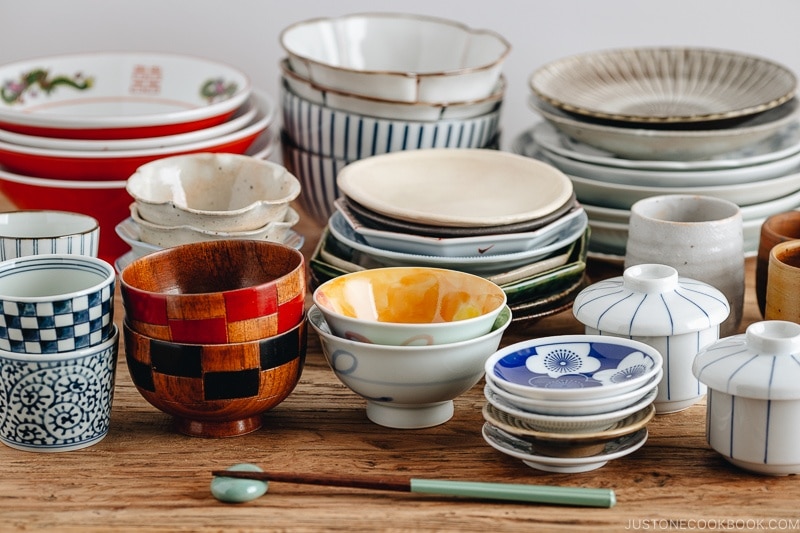Kitchenware That Endure: Recognizing High-Quality Materials
In the context of decorating your living space, choosing the best home goods can make all the difference in both your daily routines and sustained satisfaction. Whether you're a seasoned home cook or only beginning to decorate your area, understanding how to spot high-quality materials is crucial. Recommended Reading on the market are created equal, and knowing what to watch for while purchasing premium home goods can help you avoid future dissatisfaction and excessive expenses.
In this article, we will examine the important aspects of high-quality kitchenware and provide useful advice for selecting items that are both aesthetically pleasing but also robust. From cooking utensils to tableware, we will help you recognize the indicators of quality goods, allowing you to invest in housewares that will stand the test of time. With our insights, you'll be armed with a savvy buyer's manual to making informed choices for your home.
Determining Quality Materials
When it comes to selecting housewares, the materials used play a key role in influencing their longevity and performance. Look for robust stainless steel in cooking utensils and utensils, as it is immune to corrosion and corrosion, ensuring it lasts for a long time. Moreover, top-grade glassware should be lead-free and made from borosilicate or tempered, which is designed to tolerate temperature changes and reduce breakage.
In the realm of fabrics, natural fibers such as cotton fabric, linen fabric, and wool fabric often surpass synthetic options when it comes to resilience and breathability. Cotton and linen fabrics are especially valued for their ease of cleaning and comfort, making them ideal for dining textiles or kitchen fabrics. Understand the difference between man-made and organic materials, as this insight will aid you in evading poor-quality products that wear out quickly.
Finally, reflect on the surfaces and materials of your home goods. Non-stick surfaces should be PFOA-free and made with durable materials like ceramic coatings or reinforced coatings that can endure repeated use without scratching or flaking. In furniture and storage items, solid wood or high-quality metal will typically provide greater lifespan than composite materials or particle board, which can degrade when faced with moisture or heavy use. Making informed decisions about materials is key to ensuring your housewares are durable.
Signs of Durable Housewares
While shopping for housewares, a key indicator of durability you should look for is the weight of the item. Heavier products often indicate better craftsmanship, which can contribute to the overall sturdiness and longevity. For example, cast-iron cooking utensils or denser glass items can endure daily use without cracking easily. If an item feels excessively flimsy or flimsy, it’s probably constructed from cheaper materials that won’t endure.

An additional significant factor to consider is the build and surface quality of the houseware. Look for seamless designs without exposed joints or vulnerable spots, as these can be areas of breakage over time. Additionally, a smooth or well-coated finish can be a sign that the manufacturer has invested in protecting the material against wear and tear. High-quality housewares often come with guarantees or guarantees that reflect the manufacturer's trust in their durability, so it's wise to check for such assurances.
In conclusion, examining the brand reputation can provide insight into the longevity of housewares. Established brands with a legacy of fine quality tend to back their products with superior supplies and production standards. Customer reviews can also help you gauge how well a product holds up in actual use. Consulting with seasoned purchasers can offer more information about the best choices for long-lasting housewares, allowing you to make informed purchases that stand the test of time.
Tips for Savvy Shopping
When buying for quality housewares, it’s essential to do your investigation before making a purchase. Look for manufacturers that have a reputation for long-lasting quality and superior performance. Read consumer reviews to gauge how products have performed over the years. Pay attention to features in the build, such as seams on textiles or weight in pots and pans, as these can often indicate a greater level of quality. Understanding the materials used can also guide your choices, ensuring you opt for options that are both functional and long-lasting.
Another smart method is to consider the warranty and return policy. High-quality housewares often come with strong guarantees that reflect the manufacturer’s confidence in their products. A good warranty can provide reassurance, allowing you to experiment with the item without fear of losing your purchase. If a product is missing a return policy or warranty, it may be a warning sign suggesting that the manufacturer does not stand behind their quality.
Lastly, avoid the enticing pull to buy solely based on price. While finances is important, quality housewares are an investment that can be cost-effective in the end. Superior items typically excel over budget alternatives and require less frequent replacements. Embrace the concept of quality over quantity, focusing on selecting items that not only fulfill your needs but also improve the visual appeal and usability of your home.